
Lara Kriegel, “On the Death—and Life—of Florence Nightingale, August 1910”
This essay examines the death, and the life, of Florence Nightingale, the great nursing heroine of the Crimean War. An eminent Victorian, Nightingale passed away at the ripe old age of ninety in 1910, at a time when Britain was witnessing great internal strife and facing looming international tension. By that moment, the Crimean War was a thing of the distant past. Even so, Nightingale’s death served as a national tonic. It allowed mourners to rekindle the myths of Nightingale’s lifetime that had unified a ravaged nation in the wake of the Crimean War. Nightingale’s most important reforming efforts, which included nursing education, army improvement, and sanitary reform, both in Britain and in India, would postdate the Crimean War. However, the image of a young Nightingale ministering to the troops in the Crimea would remain the dominant one, not just in her life, but at her death as well. As it assesses the death and life of Nightingale, this essay focuses on two moments of celebrity and mythmaking in the long career of the heroine: the making of her legend in the Crimea and its resurrection at her death. It follows earlier literature, both generated during the nineteenth century and written by those who study it, establishing Nightingale as the avatar of Victorian womanhood. Accordingly, it seeks to understand Nightingale’s passing as a belated death knell to the Victorian age.
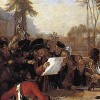
Frederick Burwick, “18 June 1815: The Battle of Waterloo and the Literary Response”
Although Europe had celebrated the end of the Napoleonic Wars with the defeat of the French armies and the abdication of the emperor on 11 April 1814, Napoleon escaped and again rallied his troops against the British and Prussian armies. His defeat at Waterloo on 18 June 1815 was the final battle with heavy losses on all sides. The extensive response in the British press was unprecedented. In addition to several military reports of the battle, many civilian eye-witness narratives also appeared. Memoirs, histories, and biographies added to the prose accounts. With contributions from Lord Byron, Sir Walter Scott, Robert Southey, William Wordsworth, and many minor authors, the poetry included both celebrations of the victory and lamentations over the loss of lives. Theatres, too, brought forth numerous spectacles and melodrama. Londoners were also treated to several exhibitions and panorama displaying scenes from the battle (Favret 8-12).
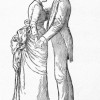
Cheryl A. Wilson, “The Arrival of the Waltz in England, 1812”
The arrival of the waltz in England changed both the experience of participating in the ballroom and the cultural impact of Victorian social dance.

Siobhan Carroll, “On Erasmus Darwin’s The Botanic Garden, 1791-1792″
1792 witnessed the publication of the complete version of Erasmus Darwin’s The Botanic Garden, a lengthy nature poem that surveyed the state of science in its day. The Botanic Garden proved immensely popular on its publication but later fell out of favor as the Anti-Jacobin took aim at its liberal politics. This paper focuses on one of the most notorious sections of the poem, in which Darwin describes his plan to change the world’s climate via iceberg destruction. The argument traces the reception of Darwin’s climate imagery from its initial reception through its redeployment in the poetry of Percy Bysshe Shelley. Although The Botanic Garden and its plan for climate intervention might be framed in terms of what philosophers call the “negative event”—an event that fails to happen—Darwin was essentially correct in his assertion that the technologies of the industrial revolution could be used to change the climate of the globe.

Erika Rappaport, “Object Lessons and Colonial Histories: Inventing the Jubilee of Indian Tea”
The fifty-year Jubilee of Indian tea was celebrated in the Spring and Summer of 1887, coinciding precisely with Queen Victoria’s Golden Jubilee. This Jubilee had nothing to do with Victoria per se, but rather the commercial anniversary invented Indian/Ceylon tea as an icon of imperial Britishness. Industry leaders used 1887 to highlight specifically two key events in tea’s commercial and imperial history, the first moment tea arrived in Britain from Assam (1837) and the first time (April 1887) that tea from both India and Ceylon surpassed imports from China. They explained the later development by arguing that Britons had learned to appreciate modern industrial production and plantation agriculture more than old-fashioned and dirty Chinese modes of production. The Jubilee thus marked publicly how and when tea became a mass-produced and consumed imperial product.
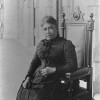
Stephen Hancock, “On the Overthrow of the Hawaiian Monarchy, 1893”
Near the turn of the nineteenth century, the Hawaiian Monarchy was formed as the islands were unified. The system was a hybrid of European monarchical government and Hawaiian practice, and it presented a strong national image to the world as Hawaii sought to maintain its independence. By the end of the century, that Monarchy had been overthrown. This article argues that, while the paradigm of Monarchy was integrated into Hawaiian governance as a way to shore up independence, it was ultimately a form of government that accommodated capitalism in Europe, serving unwittingly to pave the way for capitalist interests in Hawaii as well.

Ann Curthoys, “Settler Self-Government versus Aboriginal Rights, 1883 – 2001: The Shocking History of Section 70 of the Western Australian Constitution”
This essay describes the failed attempt by the British government to retain control over Aboriginal policy even while establishing self-government for the colony of Western Australia. The British made the attempt through a clause (Section 70) in the colony’s 1889 Constitution, which provided that £5000, or one per cent of the annual revenue of the colony when it exceeded £500,000, be set aside annually for the welfare of Aboriginal people. In addition, the British-appointed and controlled Governor, rather than the colonial government, would manage Aboriginal policy. The settlers hated the clause and in 1897 succeeded in persuading the British government to repeal it. Yet Section 70 was not forgotten, a legal challenge in the Australian High Court to its repeal failing as recently as 2001. The story of Section 70 provides a window for viewing the conflicts and collusions between imperial authorities and their settler colonies on questions of Aboriginal policy.
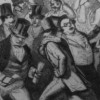
Lynn Shakinovsky, “The 1857 Financial Crisis and the Suspension of the 1844 Bank Act”
The 1857 financial crisis began in the United States and reached England in October of that year with the fall of the Liverpool Boro’ Bank. This essay examines representations of and responses to the crisis by some of the major figures and key sources of the period. While an increasingly widespread acknowledgement of the inevitability, at times even of the desirability, of crisis manifests itself in various representations and discussions of the financial crisis, the diverse ideological assumptions and expectations of various writers, politicians, and journalists proffer widely differing explanations and solutions. These range from Marx and Engels who saw in the crisis the opportunity for revolution, to entrenched capitalists who regarded it as a necessary occurrence for the promotion of further growth, to politicians and bankers who called for new interventions in the Banking system. Through an investigation of political, journalistic, and academic responses to the 1857 crisis and the suspension of the Bank Charter Act of 1844, this paper explores the political and economic significance of the crisis for mid-century global capitalism and the Banking system.
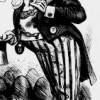
T. J. Tallie, “On Zulu King Cetshwayo kaMpande’s Visit to London, August 1882”
In August of 1882, the deposed Zulu monarch Cetshwayo kaMpande arrived in London to plead for the restoration of his kingdom, from which he had been deposed following the Anglo-Zulu War of 1879. Despite the ferocity of the war, particularly after Britain’s humiliating defeat at the Battle of Isandhlwana in January 1879, the newly elected Gladstone government sought to repudiate larger imperial goals and reversed their decision, approving Cetshwayo’s restoration. This article focuses on the depictions of Cetshwayo in the metropolitan press during his momentous 1882 visit.

Jane Stabler, “Religious Liberty in the ‘Liberal,’ 1822-23”
A survey of the negative twentieth- and twenty-first-century critical reception of the Liberal; a summary of the history of the journal and a re-evaluation of the philosophical and political coherence of the journal, focusing on its defence of religious liberty and suggesting that religious free thought is a previously overlooked component in the politics of liberalism. The criticism of doctrinal rigidity and advocacy of different forms of religious toleration evident in the four issues of the Liberal support the claim that the journal forms a lucid and intelligible cultural intervention.
